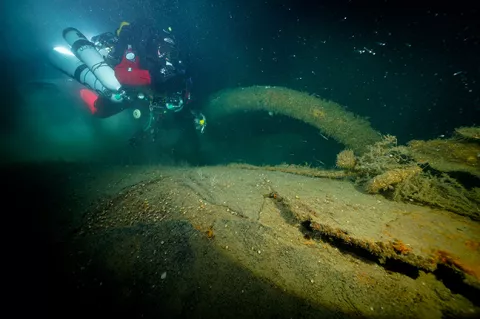Divers find First World War US shipwreck off Cornwall
The USS Jacob Jones was the first American destroyer ever to be sunk by enemy fire. After the United States entered World War I in April 1917, Jacob Jones was sent overseas. On 6 December, Jacob Jones was steaming independently from Brest, France, for Queenstown, when she was torpedoed and sunk by the German submarine U-53 with the loss of 66 men out of a crew of 150. The vessel sank in eight minutes without issuing a distress call.













